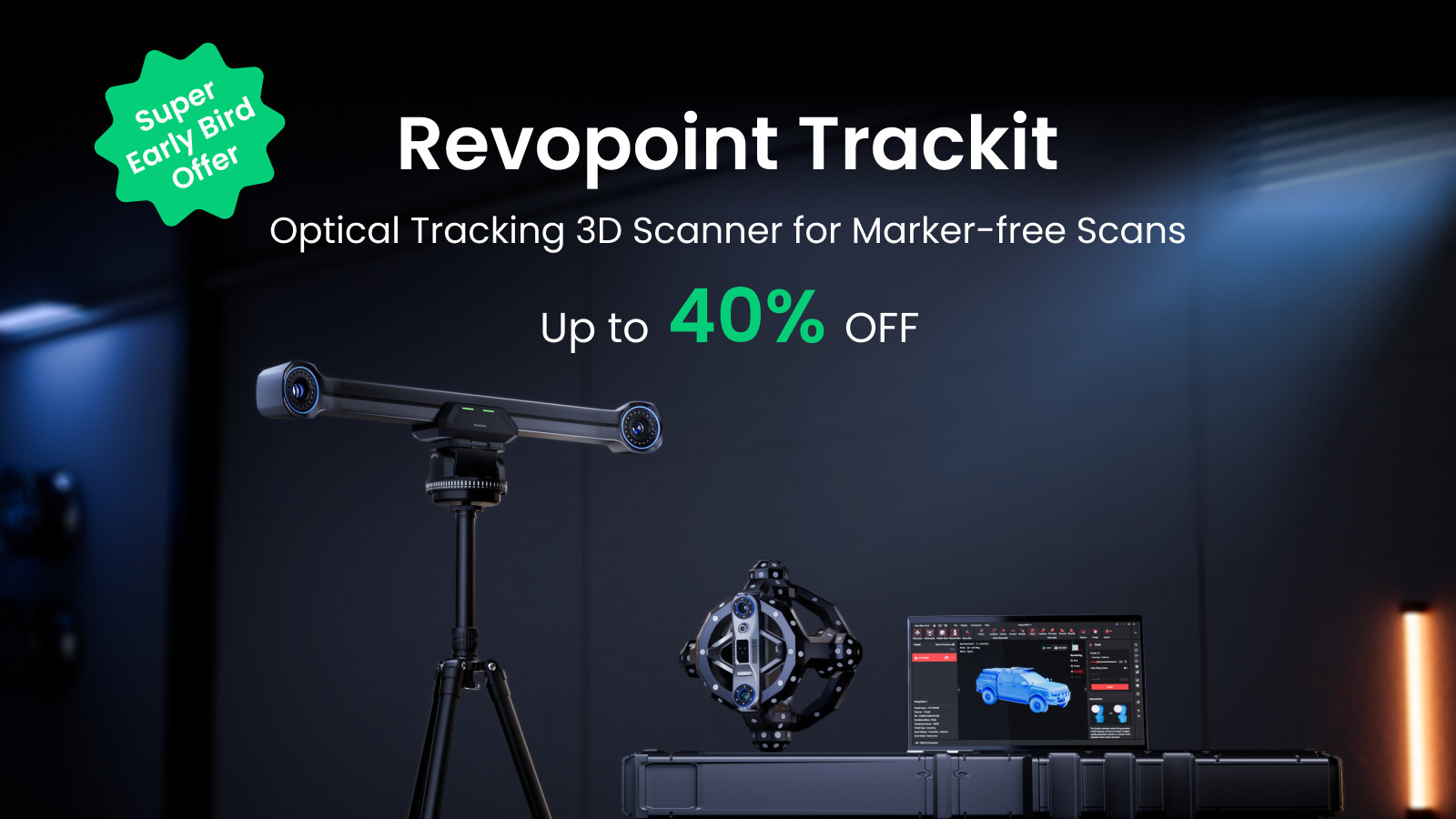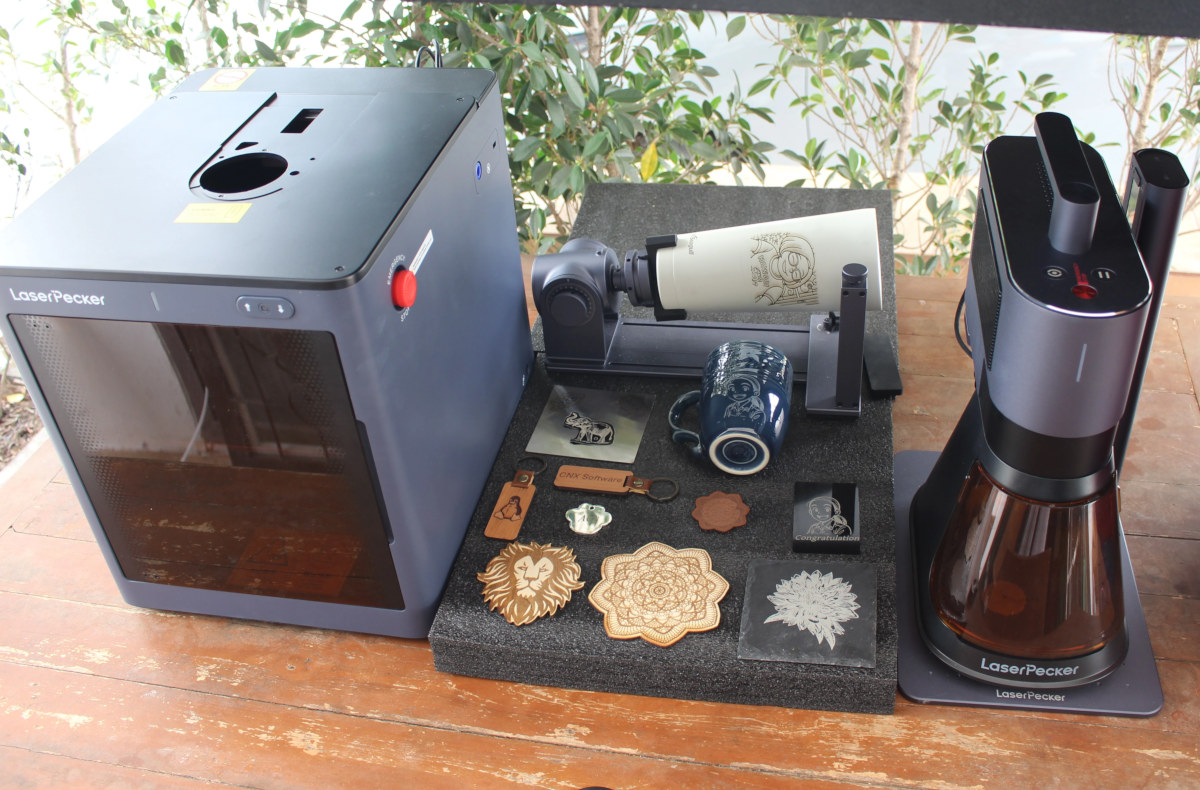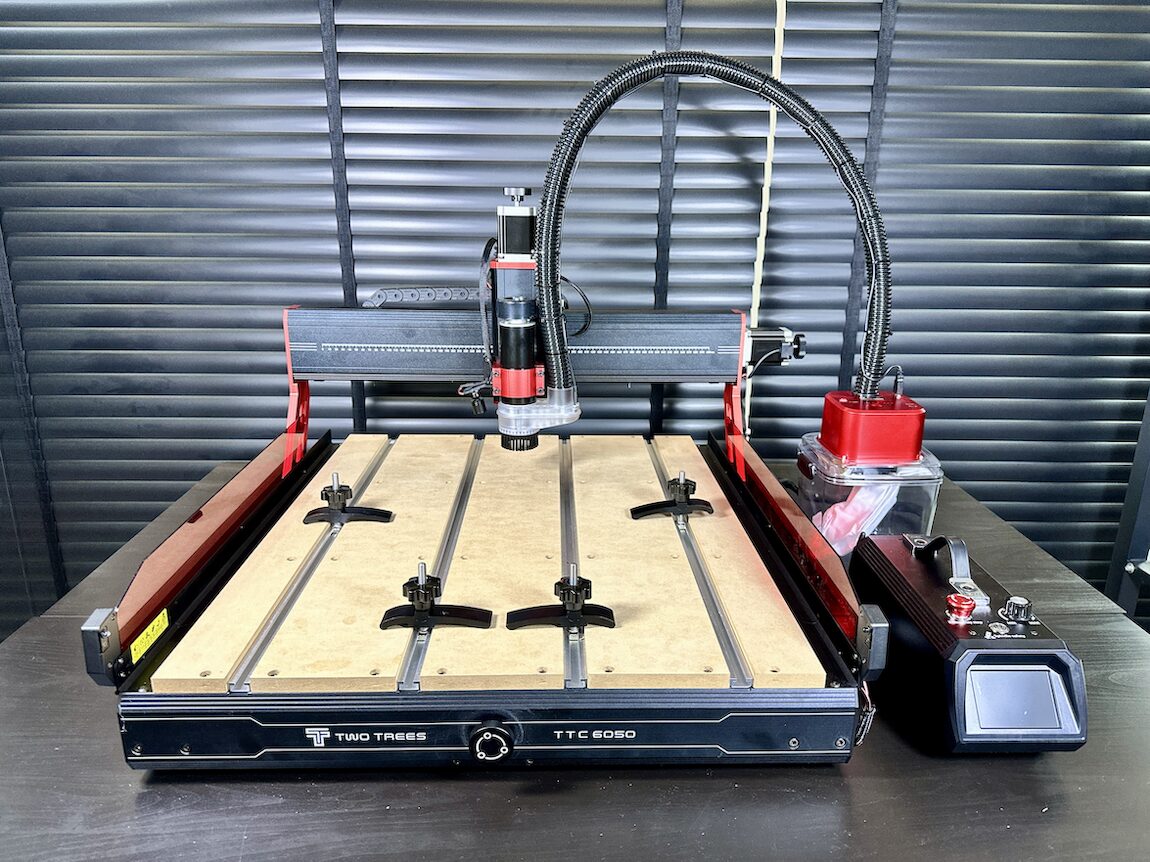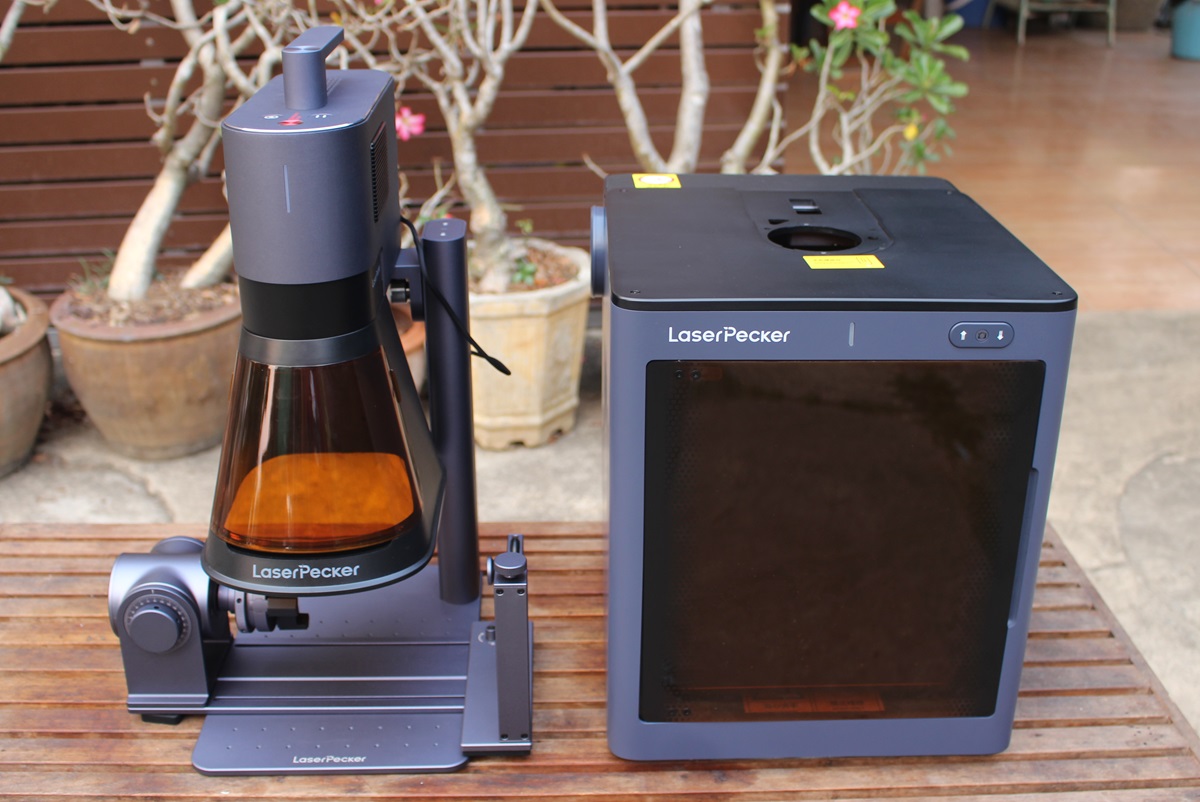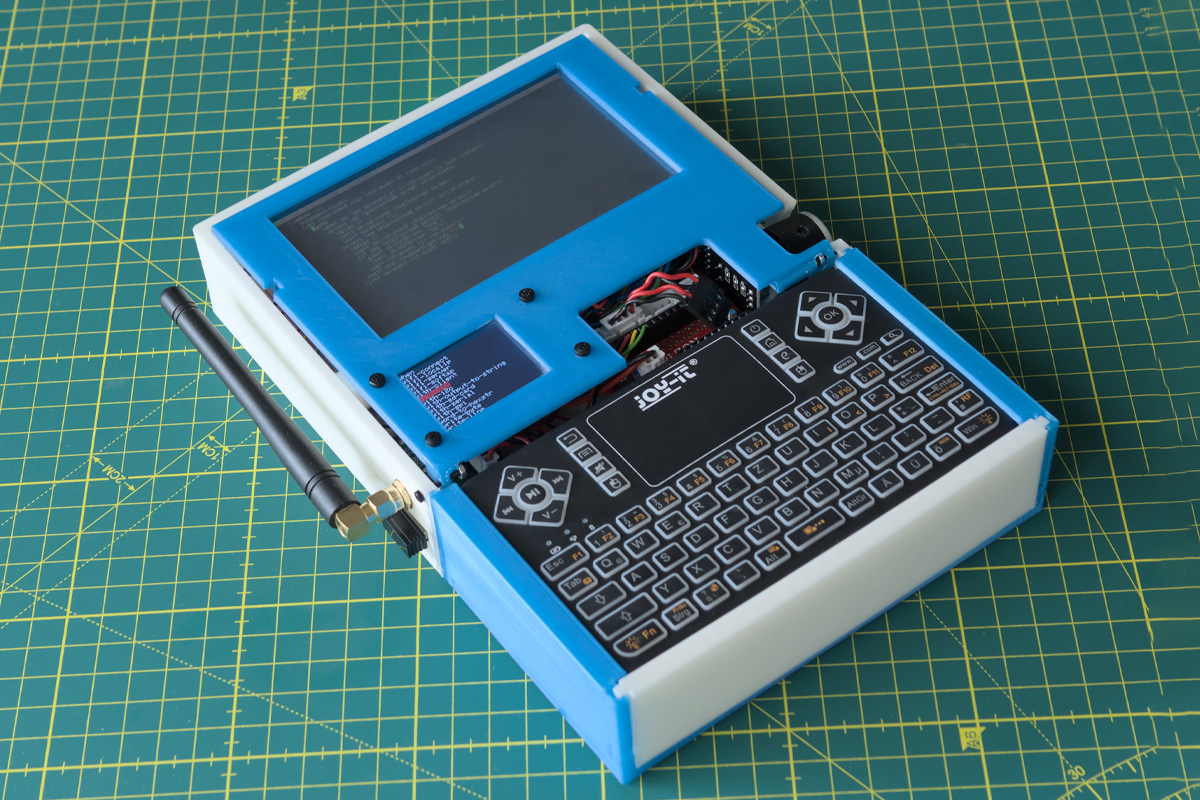Revopoint Trackit is a high-end optical 3D scanner that achieves accurate object tracking for small to large workpieces without needing markers on the object’s surface. This significantly increases scanning efficiency over conventional marker-based 3D scanning systems. The 3D scanner features an optical tracking system ensuring smooth scanning despite complex shapes, angle changes, or position shifts, maintaining stable data acquisition. The scanner offers two scanning modes with a 30-line cross blue laser mode for quick scans and a single-line blue laser mode for capturing narrow, hard-to-reach areas. Both laser modes can deal with dark and shiny surfaces without the need to first apply scanning spray, making it great for capturing delicate workpieces like circuit boards. Other highlights include a wide operating range suitable for small to large pieces (think coins to cars), auto gimbal calibration, and the ability to operate the device as a standalone handheld scanner (with markers). Revopoint Trackit […]
UV Meter for Flipper Zero measures ultraviolet radiation with AS7331 sensor
The UV Meter is a Flipper Zero application designed to measure ultraviolet (UV) radiation using the AS7331 spectral sensor, which can detect UV-A, UV-B, and UV-C wavelengths. Designed for personal and environmental UV monitoring, this tool measures UV exposure levels in everyday scenarios, whether it’s behind windows, under cloud cover, or while wearing sunglasses. It provides real-time irradiance readings in µW/cm², W/m², or mW/m², and calculates safe maximum daily exposure durations based on 2024 TLVs and BEIs from ACGIH, with adjustable factors like eye protection status, gain, and exposure time. A visual meter and warning symbols notify the user of under- or overexposure. The app also displays each UV type’s relative contribution to overall exposure risk. A compact adapter PCB enables easy connection between the Flipper Zero and the AS7331 breakout board via I²C. Flipper Zero UV Meter specifications: Target platform – Flipper Zero Sensor module – Sparkfun AS7331 Spectral […]
FlippenHeimer Geiger Counter module adds radiation sensing to Flipper Zero
The FlippenHeimer is a compact Geiger counter add-on module designed to work with the Flipper Zero. It allows users to monitor beta and gamma radiation levels using the Flipper’s display and power source, making it a portable device to detect radiation. Built around a J305 Geiger–Müller tube, the FlippenHeimer provides real-time data logging, visual feedback via graphs. Other than that, it features “atomic dice roller” functionality that uses the random nature of radioactive decay to generate unpredictable outcomes. Key components of this device include 555 timers, LM358 op-amps, 2N3904 and MPSA42 transistors, inductors, and high-voltage capacitors. These features make this device useful for applications such as environmental awareness, hobbyist radiation monitoring, and generating random values. FlippenHeimer Specifications: Main interface – Connects to Flipper Zero via GPIO/UART (plug-and-play with GPIO header) Detection device – J305 Geiger-Müller glass tube, suitable for gamma and beta radiation Radiation detection: Detects beta and gamma radiation […]
LaserPecker LP5 Review – Part 2: A 20W diode & fiber laser engraver tested with LDS software, rotary extension, safety enclosure
We have already checked the specifications, done an unboxing, and shown how to assemble the LaserPecker LP5 2-in-1 fiber & diode laser engraver along with its safety enclosure and rotary extension in the first part of the review. In the second part of the review, we will report our experience using the LaserPecker LP5 laser engraver with various materials such as plywood, stainless steel, rubber, and aluminum, as well as a ceramic cup and an insulated tumbler using either the LDS software on Windows or the LDS mobile apps on an iPad. Using the LaserPecker LP5 laser engraver with LDS software LaserPecker Design Space (LDS) is a laser engraving and cutting software designed specifically for the LaserPecker laser engravers. It’s meant to allow users to easily create projects with personalized engraving, complex patterns, and precise cutting of various materials. It can run on Windows and macOS with Intel or Apple […]
TwoTrees TTC6050 CNC router review with vacuum cleaner Monster (M1) kit and a 800W spindle upgrade
Twotrees has sent us a TTC6050 CNC router for review, along with a vacuum cleaner Monster (M1) kit and an 800W spindle upgrade with a speed of 30,000 RPM. The machine is designed for carving and milling various materials such as wood, plastic, and metal. It features a working area of 600 x 500 x 100 mm and comes equipped with a 500W spindle by default, upgradable to an 800W spindle. It’s capable of handling larger workpieces, works faster, and supports a broader variety of materials than the TwoTrees TTC 450 CNC router we reviewed in 2023 with a 500W spindle. In this review, we will start by listing the specifications and going through an unboxing, before assembling the TTC6050 CNC router and the vacuum cleaner Monster (M1) Kit, and installing the Candle CNC software to conduct milling tests on thick MDF wood. After that, we’ll install the 800W high-speed […]
LaserPecker LP5 fiber and diode laser engraver review – Part 1: Unboxing and assembly with rotary extension and safety enclosure
We’ve just received the LaserPecker LP5 20W Fiber Laser + Diode Laser engraver for review as part of a kit that includes a rotary extension to engrave cylindrical objects like bottles and glasses and a safety enclosure to engrave or cut workpieces with maximum safety in a fully-enclosed chassis. The LP5 is one of the smallest 2-in-1 laser engravers in the industry and can engrave on a wide range of materials. The fiber laser is suitable for stainless steel, aluminum, brass, silver, plastic, platinum, titanium, gold, etc, while the diode laser works best on wood, acrylic, leather, glass, stone, paper, and rubber. The device is supposed to be relatively fast with an engraving speed of up to 10,000mm/s, and it can cut wood up to 15mm thick and metal up to 1mm thick. We usually do a one-part review for laser engravers, but since our LaserPecker LP5 kit comes with […]
LispDeck handheld lisp computer Runs uLisp on Teensy 4.1 with Wi-Fi, LoRa, and two screens
Designed by Hartmut Graw, the LispDeck is a Handheld Lisp computer built around the Teensy 4.1 microcontroller for Lisp programming on the go. It features a dual-screen setup with a 5-inch touchscreen and, a secondary ST77350-based TFT display. It also has an Adafruit RFM96 radio module, an ESP8266 Wi-Fi module, a rotary encoder, an SD card for storage, and a detachable wireless USB keyboard, all housed in a 3D-printed case. Running the uLisp language, it features a standalone Lisp programming environment without needing a PC or tablet. It is an evolution of the LispBox, with a portable and battery-powered design, which also maintains compatibility. Unlike Raspberry Pi-based cyberdecks, the LispDeck is designed for complete control over the system without the complexity of Linux. It is useful for Lisp enthusiasts who want a compact, dedicated computing device that’s fully documented. LispDeck Specifications SoC – NXP i.MX RT1062 via Teensy 4.1 board […]
LLMStick – An AI and LLM USB device based on Raspberry Pi Zero W and optimized llama.cpp
Youtuber and tech enthusiast Binh Pham has recently built a portable plug-and-play AI and LLM device housed in a USB stick called the LLMStick and built around a Raspberry Pi Zero W. This device portrays the concept of a local plug-and-play LLM which you can use without the internet. After DeepSeek shook the world with its performance and open-source accessibility, we have seen tools like Exo that allow you to run large language models (LLMs) on a cluster of devices, like computers, smartphones, and single-board computers, effectively distributing the processing load. We have also seen Radxa release instructions to run DeepSeek R1 (Qwen2 1.5B) on a Rockchip RK3588-based SBC with 6 TOPS NPU. Pham thought of using the llama.cpp project as it’s specifically designed for devices with limited resources. However, running llama.cpp on the Raspberry Pi Zero W wasn’t straightforward and he had to face architecture incompatibility as the old […]


